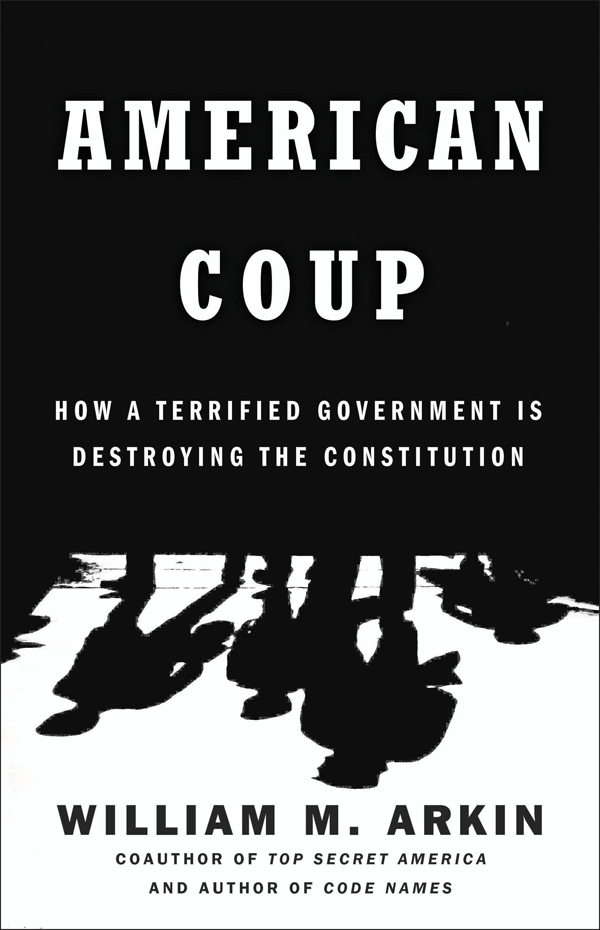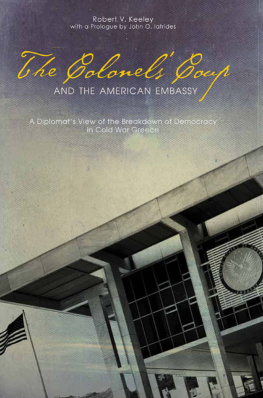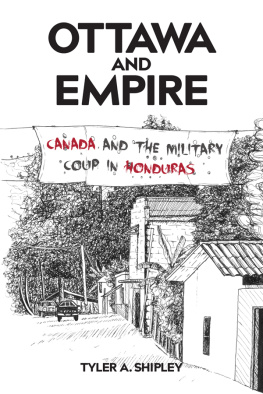
In accordance with the U.S. Copyright Act of 1976, the scanning, uploading, and electronic sharing of any part of this book without the permission of the publisher is unlawful piracy and theft of the authors intellectual property. If you would like to use material from the book (other than for review purposes), prior written permission must be obtained by contacting the publisher at permissions@hbgusa.com. Thank you for your support of the authors rights.
Thank you for buying this ebook, published by Hachette Digital.
To receive special offers, bonus content, and news about our latest ebooks and apps, sign up for our newsletters.
Sign Up
Or visit us at hachettebookgroup.com/newsletters
For more about this book and author, visit Bookish.com.
Copyright 2013 by William M. Arkin
Author photograph by Luciana Frigerio
Cover design by Archie Ferguson; cover photograph by Marcus Appelt/Arcangel Images
Cover copyright 2013 by Hachette Book Group, Inc.
All rights reserved. In accordance with the U.S. Copyright Act of 1976, the scanning, uploading, and electronic sharing of any part of this book without the permission of the publisher is unlawful piracy and theft of the authors intellectual property. If you would like to use material from the book (other than for review purposes), prior written permission must be obtained by contacting the publisher at permissions@hbgusa.com. Thank you for your support of the authors rights.
Little, Brown and Company
Hachette Book Group
237 Park Avenue, New York, NY 10017
littlebrown.com
twitter.com/littlebrown
facebook.com/littlebrownandcompany
First ebook edition: September 2013
The publisher is not responsible for websites (or their content) that are not owned by the publisher.
The Hachette Speakers Bureau provides a wide range of authors for speaking events. To find out more, go to hachettespeakersbureau.com or call (866) 376-6591.
ISBN 978-0-316-25125-9
Top Secret America: The Rise of the New American Security State with Dana Priest
Divining Victory: Airpower in the 2006 Israel-Hezbollah War
Code Names: Deciphering U.S. Military Plans, Programs, and Operations in the 9/11 World
Operation Iraqi Freedom: 22 Historic Days in Words and Pictures with Marc Kusnetz and General Montgomery Meigs
The US Military Online: A Directory for Internet Access to the Department of Defense
Encyclopedia of the US Military with Joshua Handler, Julie A. Morrissey, and Jacquelyn Walsh
Nuclear Weapons Databook: Volume IV: Soviet Nuclear Weapons with Thomas B. Cochran, Robert S. Norris, and Jeffrey I. Sands
Nuclear Weapons Databook: Volume III: US Nuclear Warhead Facility Profiles with Thomas B. Cochran, Milton M. Hoenig, and Robert S. Norris
Nuclear Weapons Databook: Volume II: US Nuclear Warhead Production with Thomas B. Cochran, Milton M. Hoenig, and Robert S. Norris
Nuclear Battlefields: Global Links in the Arms Race with Richard Fieldhouse
S.I.O.P.: The Secret U.S. Plan for Nuclear War with Peter Pringle
Nuclear Weapons Databook: Volume I: US Nuclear Forces and Capabilities with Thomas B. Cochran and Milton M. Hoenig
Research Guide to Current Military and Strategic Affairs
To Luciana
W e are a nation living with two sets of laws, one public law as guided by the Constitution and a second, invisible text that exists between the lines of that document. The Constitution specifies the ABCs, upholding public welfare and common defense with powers granted to the federal government that are excruciatingly limited and balanced so as to not infringe on the inherent rights of the people or the member states of the republic. Between the lines are the XYZs of the extraordinary, the charter of another realm, one beyond the reach of Congress, the courts, and the people; a system of federal preeminence and an executive preoccupation that possesses self-authored powers to govern in the hereafter, subtly reordering the relationship between the people and its government in the here and now.
This dualitycodified through decades of deliberate concealmentpurports to merely supplement the two-hundred-year-old doctrine that couldnt possibly anticipate societal vulnerability to man-made and natural threats in an age of weapons of mass destruction and terrorism. But the implementation of the XYZs is not lagging in some legislative queue; it is already in place, the very essence of executive tyranny our forefathers feared. It is the elevation of common defense above public welfare, expediency turned into necessity, a subtle house of correction offering the illusion of security. This tug-of-war has been ever present during our lifetimes, the shining promise being that someday we will return to the application of the basic principles enshrined in the Constitution. Yet we are not going back. The soul of our nation, the principle of individual rights upheld by the union of constraints on executive and government power, is at risk. At no point in our history have we faced a challenge like the one we face now, a wholly permanent state of martial life hidden in fine print, secrecy, fear, and the dream of guaranteed physical protection.
I became interested in underground government on the day John Hinckley, Jr., attempted to kill President Ronald Reagan in 1981. Then a young Washington analyst and budding expert, I was called upon to comment in the news media about how the country was run amidst chaos. Over the years, I researched and wrote about the world of what-if, my heart pumping as hard when I discovered some vague piece of the puzzle buried in budget documents and government reports as when I drove out to some Washington suburb to take a look at an invisible hideout.
I was never seized with a fear of nuclear war during this period, so I fell into the camp that saw continuity of government as more comical than sinistermore the latest incarnation of duck and cover and Bert the turtle, much closer to Dr. Strangelove than Seven Days in Maya waste of money perhaps but not really dangerous. It seemed common sense to me that plans should have been made for managing the nation if a president was murdered, especially in the nuclear age. But I was swept up in the conventional wisdom that there was a twisted and unbalanced militarism behind Secretary of State (and retired general) Alexander Haigs infamous I am in control here proclamation, not really able to see or articulate the larger system of emergency procedures that seized greater import.
Three decades later I could adeptly recount both the history and continuity of these preparations for control after catastrophe: priorities and procedures that seemed to persist through Republican and Democratic administrations, conservative and liberal, peacetime and wartime. But there was one huge difference after 9/11: these secret procedures and plans werent just geared toward the possibility of Doomsday, for some single and distant final event, because Doomsday was now every day.
Something new was going on, much of it explained in Top Secret America, the Washington Post newspaper series and book that Pulitzer Prizewinning reporter Dana Priest and I collaborated on for three years. The basic premise of that investigation was that the post-9/11 civil defense industry was not only bureaucratically but geographically transforming the nation. The lights had never gone out in many of the facilities that had been used during the Reagan years and before; others were reintroduced, the government urging the news media to keep their locations secret from al Qaeda even though a good number of them, such as Mount Weather and Raven Rock, the primary civilian and military underground bunkers just outside Washington, had been mentioned in numerous books and articles in years previous. And while the old initials and logos remained, there were some notable new acronyms and euphemisms that hinted of secret activities down vaporous paths.
Next page








